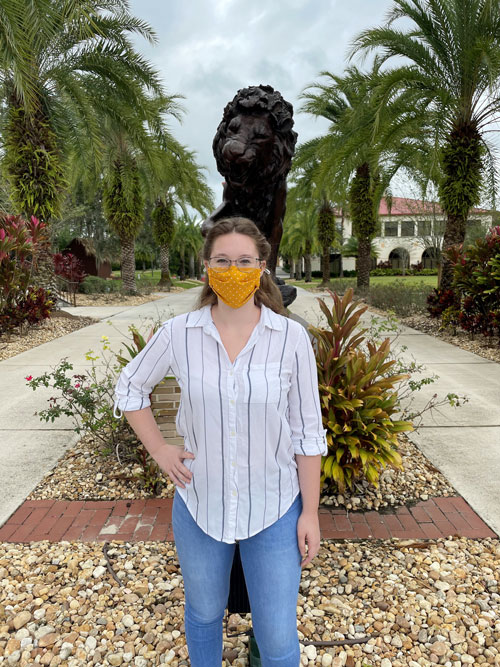Saint Leo University Teacher-Preparation Equation Adding More Science and Math Elements
Substantial scholarships available to help young people enter teaching careers

Substantial scholarships available to help young people enter teaching careers

classroom teachers for elementary and middle schools, and now is doing more to help address the shortage of secondary school teachers for STEM subjects—science, technology, engineering and mathematics. The dearth is a problem both for schools and for our broader society.
Fortunately, there are young people willing and able to embrace STEM teaching if offered sufficient nurturing and support—people like Laela Ouellette, a junior at Saint Leo. The 20-year-old Ouellette was in the right place when Saint Leo convinced the National Science Foundation to help underwrite major scholarships to develop more STEM teachers.
But the federal dollars were crucial for getting started. Administrators and faculty worked diligently to attract $1.2 million from the National Science Foundation (NSF) Robert Noyce Teacher Scholarship Program, named for the late American physicist (1927-1990), to pay for the generous scholarships. If Noyce's surname does not sound familiar, his accomplishments are recognizable. He co-invented the integrated circuit in 1959, and later co-founded Intel Corp., the major supplier of computer processors. He also worked to keep the American semiconductor research at the forefront of an international rivalry—a pursuit that required gaining cooperation from competing corporations for a national good. And when the foundation created a program in 2002 to attract talented young people into educational careers—rather than leaving the matter to chance—the initiative was named for Noyce.
visit this page. Or, email ACES@saintleo.edu.
Facts on critical teacher shortages
The need for teachers is especially acute in some subject areas. Early in 2020, the Florida Department of Education named general science, physical science, and mathematics as being among the eight subject areas experiencing a "critical teacher shortage" statewide for the 2020-2021 school year. The subjects have been on the list in previous years, as well.
That can force schools in Florida to hire as instructors of mathematics or general science people who are not yet certified to teach in those subjects. In such cases, the teachers have to attain certification in their subject within three years to keep working in their positions. The state and colleges have established training pathways for people in those situations. But naturally schools prefer to hire educators who have those certifications from the outset.